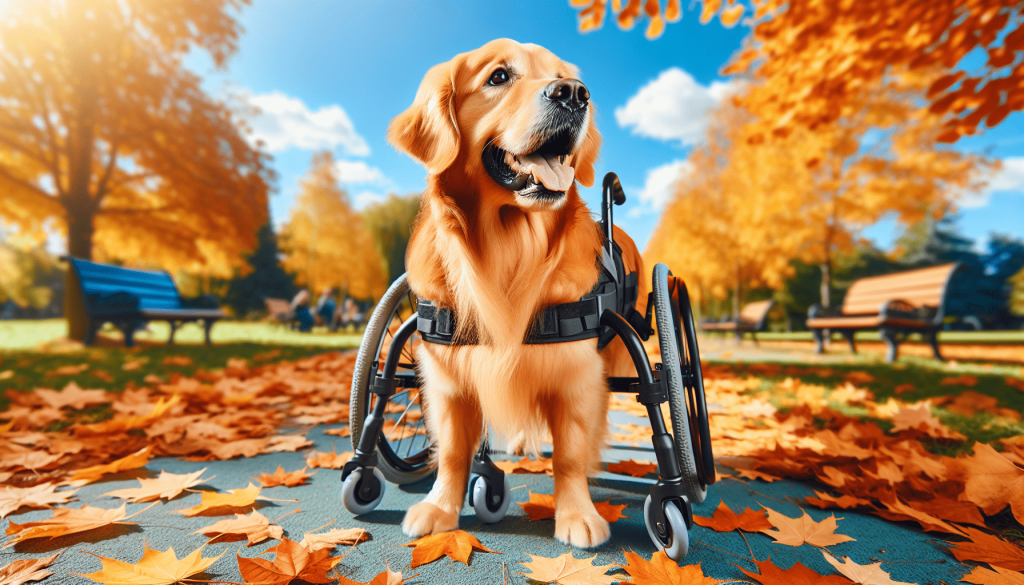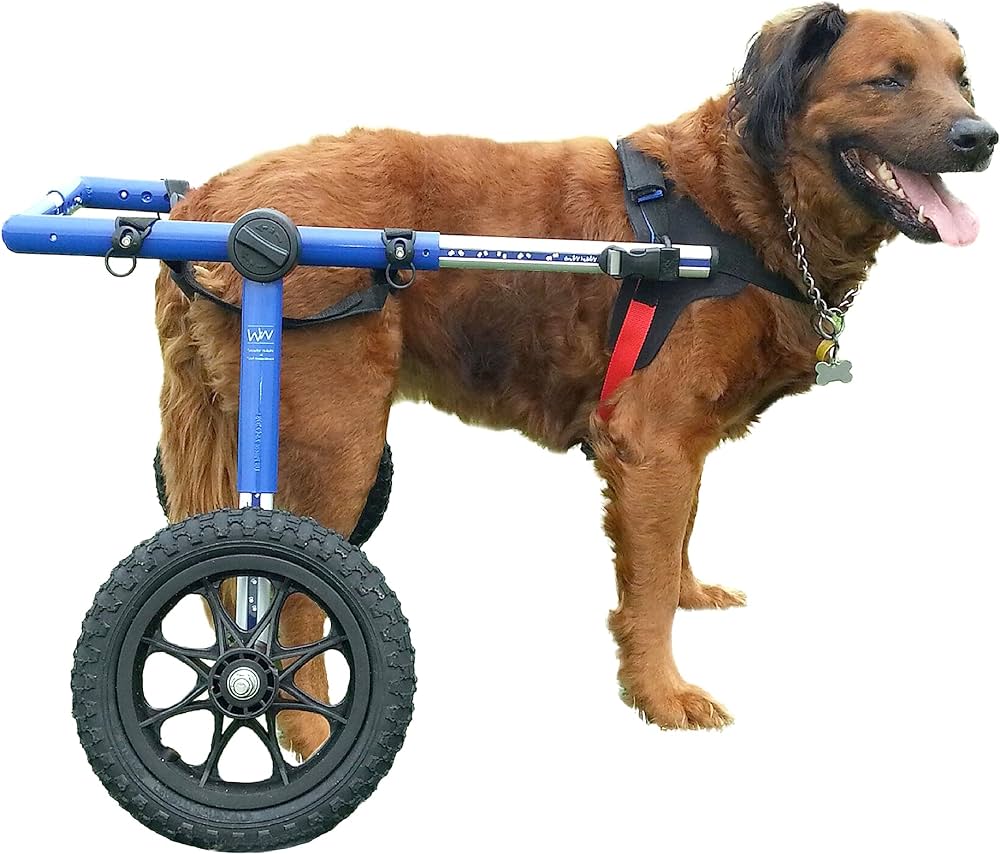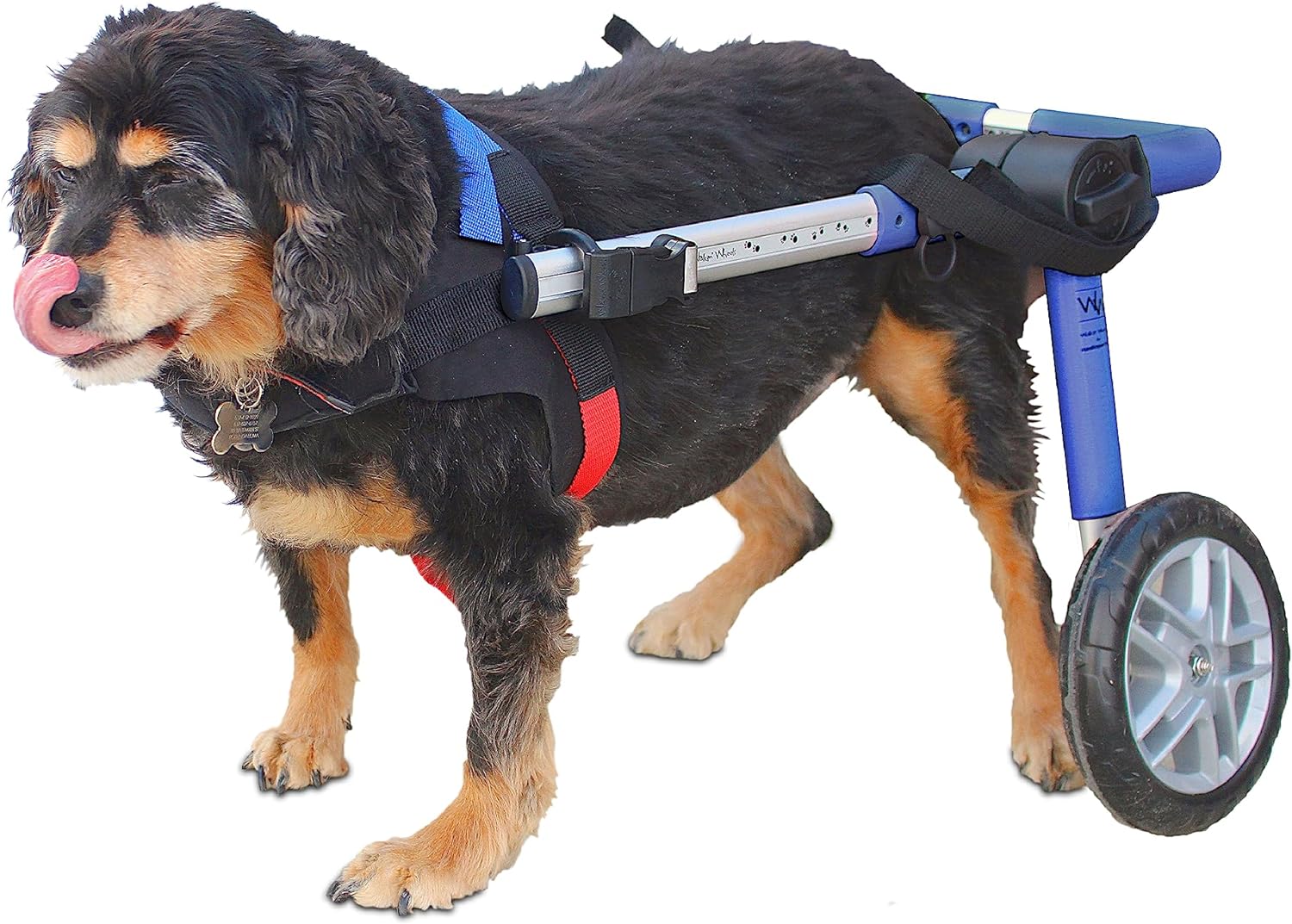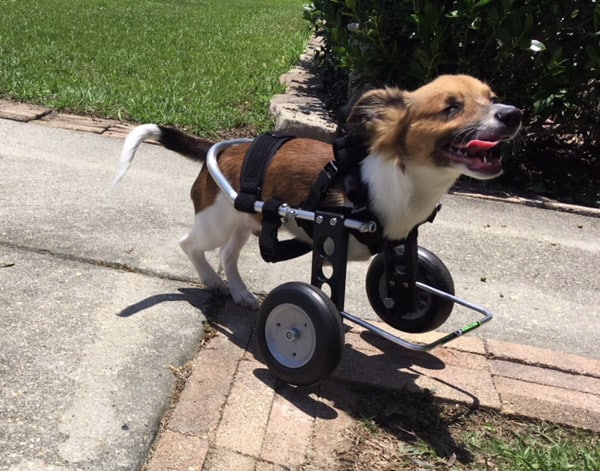If you’ve ever wondered whether dog wheelchairs are worth considering for your furry friend, you’re in the right place. In this article, we’ll explore the benefits and limitations of dog wheelchairs, providing you with all the information you need to decide if one could enhance your dog’s mobility and overall quality of life. Whether your dog is experiencing mobility issues due to age, injury, or illness, we’ll discuss how these specially designed wheelchairs can provide a helping paw and enable them to continue enjoying their favorite activities. So let’s get started and find out if dog wheelchairs are any good for your canine companion!
Benefits of Dog Wheelchairs
Improved Mobility
Dog wheelchairs can greatly improve the mobility of dogs with mobility issues. Whether it’s due to old age, injury, or a medical condition, these devices provide support and assistance to enable them to move around more comfortably. By using a dog wheelchair, your furry friend can regain the freedom to explore their surroundings and maintain an active lifestyle.
Increased Quality of Life
A dog wheelchair can significantly enhance your dog’s quality of life. With improved mobility, they can engage in activities they enjoy, such as going for walks or playing fetch. The ability to move freely helps alleviate boredom and frustration, leading to a happier and more fulfilled dog. It also promotes mental stimulation, which is vital for their overall well-being.
Preventing Further Health Issues
Using a dog wheelchair can prevent additional health issues that may arise from immobility. When dogs are unable to move properly, they may develop muscle weakness, joint stiffness, and even bedsores. By providing support and allowing them to maintain an active lifestyle, a dog wheelchair can reduce the risk of these secondary health problems, thus promoting their overall physical health.
Inclusion in Activities
Having a dog wheelchair enables your furry companion to participate in activities with you and other dogs. They can join you on walks, hikes, or trips to the park, ensuring they remain a part of your daily routines and social interactions. This inclusion is crucial for their mental and emotional well-being, as dogs are social creatures who thrive on companionship and interaction.
Factors to Consider Before Using a Dog Wheelchair
Type and Severity of Mobility Issue
Before acquiring a dog wheelchair, it’s important to evaluate the type and severity of your dog’s mobility issue. Different wheelchairs cater to specific conditions, such as rear leg paralysis or full body support. Understanding the nature of your dog’s mobility issue will help you choose the most suitable wheelchair that addresses their specific needs.
Size and Weight of the Dog
The size and weight of your dog play a significant role in selecting the right dog wheelchair. Wheelchairs are designed with weight limits and height adjustments to ensure a proper fit. Measure your dog’s height and weight accurately to choose a wheelchair that provides adequate support and allows for comfortable movement.
Health of the Dog
Consider your dog’s overall health condition before using a wheelchair. Consult with your veterinarian to ensure that they are physically fit to use a wheelchair and that it will not further worsen any existing health conditions. Your vet can guide you on the appropriateness of a wheelchair and advise on any modifications or precautions needed.
Availability of Support and Assistance
Using a dog wheelchair often requires some support and assistance from the owner. Consider your availability and ability to provide the necessary support. If you live alone, you may need to rely on friends, family, or professional assistance to help your dog get accustomed to the wheelchair and navigate their surroundings.
Types of Dog Wheelchairs
Rear Support Wheelchairs
Rear support wheelchairs are designed for dogs with hind limb weakness or paralysis. These wheelchairs support the dog’s rear end, allowing them to move their front legs freely while their hindquarters are supported by harnesses or slings. Rear support wheelchairs are suitable for dogs with conditions such as degenerative myelopathy, spinal injuries, or hip dysplasia.
Full Support Wheelchairs
Full support wheelchairs are designed for dogs with limited or no mobility in all four legs. These wheelchairs provide support to the front and rear end of the dog, ensuring they can move comfortably and safely. Full support wheelchairs are commonly used for dogs with conditions like spinal cord injuries, amputations, or severe arthritis.
Front Support Wheelchairs
Front support wheelchairs are designed for dogs with front limb weakness or paralysis. These wheelchairs support the dog’s front end, giving them the ability to move their rear legs freely while their front end is supported. Front support wheelchairs are ideal for dogs with conditions such as cervical disk disease, brachial plexus injuries, or nerve damage to the front legs.
Choosing the Right Dog Wheelchair
Measurement and Fit
Accurate measurements of your dog’s height, length, and weight are crucial for choosing a wheelchair that fits properly. Each manufacturer provides sizing guides, so make sure to follow them closely. A well-fitting wheelchair ensures comfort, stability, and proper weight distribution, allowing your dog to move with ease.
Adjustability and Customization
Consider the adjustability and customization options of the wheelchair. Some wheelchairs offer adjustable harnesses, frames, and wheel heights, allowing for a more personalized fit. Customization options also allow for easy adaptation if your dog’s condition changes over time.
Durability and Materials
Invest in a durable and sturdy wheelchair made from high-quality materials. Dogs can be active and sometimes rough with their wheelchairs, so choosing a model that can withstand their movements and environmental factors is important. Look for wheelchairs made from lightweight yet durable materials such as aluminum or stainless steel.
Comfort and Ease of Use
Choose a wheelchair that prioritizes your dog’s comfort. Look for features such as padding, adjustable straps, and cushioned leg rings to ensure your dog remains comfortable during use. Additionally, opt for wheelchairs that are easy to assemble, disassemble, and clean, making it convenient for both you and your furry friend.
Training and Adapting to a Dog Wheelchair
Positive Reinforcement and Patience
When introducing your dog to a wheelchair, use positive reinforcement to create a positive association. Reward them with treats, praise, and encouragement whenever they interact with or use the wheelchair. Be patient throughout the training process, as it may take time for your dog to adapt and feel comfortable.
Gradual Introduction and Acclimation
Introduce the wheelchair gradually to help your dog acclimate to the new device. Start by allowing them to explore and sniff the wheelchair without any pressure or constraints. Then, gradually introduce them to wearing the wheelchair while providing support and guidance. Gradual exposure will help your dog build confidence and trust in the wheelchair.
Monitoring and Supportive Care
Regularly monitor your dog when using the wheelchair to ensure their comfort and safety. Make adjustments as needed, such as tightening straps or readjusting the fit. Provide supportive care such as regular bathroom breaks, maintaining a healthy diet, and monitoring skin condition to prevent any discomfort or complications.
Regular Exercise and Rehabilitation
A dog wheelchair should not replace regular exercise and physical therapy. Consult with your veterinarian or a rehabilitation specialist to determine appropriate exercises and rehabilitation routines for your dog’s specific condition. Regular exercise and rehabilitation will help maintain muscle tone, promote joint health, and contribute to their overall well-being.
Common Concerns and Misconceptions
Dependence on the Wheelchair
One common concern is that dogs may become overly dependent on the wheelchair. However, when used appropriately, a dog wheelchair actually promotes independence by enabling them to move freely without relying solely on their strength. The wheelchair should be seen as a tool to enhance their mobility, not a crutch.
Restrictions on Outdoor Activities
Some dog owners worry that a wheelchair will limit their dog’s outdoor activities. However, most dog wheelchairs are designed to handle various terrains, including grass, gravel, and pavement. With proper guidance and support, dogs can still enjoy outdoor adventures and engage in their favorite activities while using a wheelchair.
Effectiveness in Different Terrains
Dog wheelchairs are designed to be effective on different terrains. However, it’s important to choose the appropriate wheelchair that suits your dog’s needs and the terrain they will encounter. Rear support wheelchairs may perform better on flat surfaces, while full support wheelchairs tend to be more versatile in navigating rougher terrains.
Potential Discomfort or Harm
When used correctly, dog wheelchairs should not cause discomfort or harm to your furry friend. It’s essential to choose a properly-sized wheelchair, make necessary adjustments, and ensure your dog is comfortable and properly supported. Regularly check for any signs of rubbing, chafing, or irritation, and consult your veterinarian if you have any concerns.
Testimonials and Success Stories
Dog Owners’ Personal Experiences
Many dog owners have shared their success stories and positive experiences with dog wheelchairs. These testimonials demonstrate how wheelchairs have significantly improved their dogs’ quality of life, allowing them to regain mobility, engage in activities, and thrive despite their mobility challenges.
Improvement in Mobility and Happiness
Dog wheelchairs have proven to improve dogs’ mobility, allowing them to move freely and explore their surroundings. This increased mobility brings joy and happiness to both dogs and their owners, as they can once again enjoy walks, play, and other daily activities together.
Ability to Maintain Normal Daily Life
With the help of a wheelchair, dogs can often maintain a relatively normal daily life. They can still perform essential functions such as eating, drinking, and going to the bathroom without hindrance. Wheelchairs provide the necessary support for dogs to continue their daily routines independently.
Recovery and Rehabilitation
In some cases, dog wheelchairs have been instrumental in the recovery and rehabilitation process. By supporting proper weight distribution and promoting movement, wheelchairs can aid in muscle toning, encourage range of motion, and facilitate the healing process for dogs recovering from surgeries or injuries.
Costs and Affordability
Varied Price Range
The cost of dog wheelchairs can vary depending on the design, materials used, and adjustability features. Basic models can be relatively affordable, ranging from $100 to $200. However, more advanced wheelchairs with additional features and customization options can cost between $300 and $600. Consider your budget and your dog’s specific needs when selecting a wheelchair.
Consideration of Long-Term Investment
When considering the cost of a dog wheelchair, it’s important to view it as a long-term investment. A high-quality wheelchair can serve your dog for many years, providing ongoing support and mobility. Investing in a durable and well-designed wheelchair ensures your dog’s continued comfort and well-being in the long run.
Insurance Coverage and Assistance Programs
Some pet insurance policies may cover a portion of the cost of a dog wheelchair, particularly for dogs with pre-existing conditions or mobility issues. Additionally, certain organizations and assistance programs offer financial aid for pet owners in need. Research and explore these options to potentially alleviate the financial burden of acquiring a wheelchair.
DIY Options and Second-Hand Wheelchairs
For those on a tight budget, DIY options and second-hand wheelchairs can be viable alternatives. Many online communities and resources provide instructions on how to create homemade wheelchairs using readily available materials. Additionally, second-hand wheelchairs can be found through online marketplaces or local pet communities. However, ensure that any DIY or second-hand wheelchair is safe, properly fitted, and suits your dog’s specific needs.

Where to Find Dog Wheelchairs
Veterinarians and Rehabilitation Specialists
Consulting with your veterinarian or a rehabilitation specialist is a great starting point when exploring dog wheelchair options. They can provide guidance on the most appropriate type of wheelchair for your dog’s condition, recommend trusted brands, and help with fitting and adjustments.
Online Retailers and Specialty Stores
Numerous online retailers offer a wide range of dog wheelchairs, providing accessibility and convenience. These retailers often provide detailed product information, sizing charts, and customer reviews to assist you in making an informed decision. Additionally, specialty pet stores may also carry dog wheelchairs or be able to order them for you.
Local Pet Supply Shops and Animal Hospitals
Check your local pet supply shops and animal hospitals for potential availability of dog wheelchairs. These establishments may carry a limited selection or be able to provide recommendations on where to find them locally.
Rescue Organizations and Support Groups
Rescue organizations and support groups dedicated to dogs with mobility issues often have resources and information on dog wheelchairs. They may be able to offer advice, provide recommendations, or connect you with other dog owners who have firsthand experience with dog wheelchairs.
Conclusion
Using a dog wheelchair is a decision that should be made after careful consideration of your dog’s specific needs and circumstances. Consult with experts, such as veterinarians and rehabilitation specialists, to determine the best course of action. By providing your loving companion with a dog wheelchair, you can significantly improve their quality of life, promote their mobility, and ensure their inclusion in various activities. The positive impact of dog wheelchairs is evident in the testimonials and success stories shared by dog owners worldwide. Keep in mind the various factors to consider, such as the type of mobility issue, size and weight of your dog, their overall health, and the availability of support and assistance. With the right wheelchair and proper training, your furry friend can overcome mobility challenges and continue to enjoy a fulfilling and happy life.



